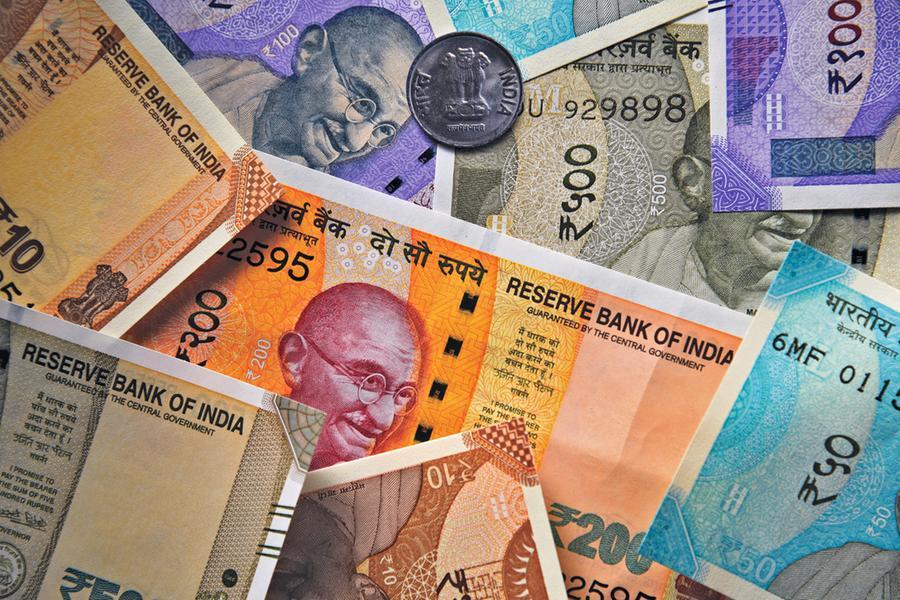The currency corridors between the UAE and India remain among the busiest in the world, with millions of Indian expatriates sending billions of dirhams home each year. As of mid-May 2025, the Indian rupee (INR) continues to hold a relatively stable position against the UAE dirham (AED), prompting a key question among expats: should they remit funds now or wait for more favorable rates?
In a market marked by shifting global indicators and geopolitical uncertainties, exchange rates become more than just numbers — they represent strategic financial decisions for households relying on overseas incomes. With the AED pegged to the US dollar, the UAE’s economic indicators tend to mirror those of the United States, while India’s currency is more vulnerable to fluctuations in global oil prices, foreign capital flows, and domestic economic performance.
Current Market Snapshot
As of May 12, 2025, the AED-INR exchange rate is hovering around ₹23.25 to the dirham. BookMyForex, a widely used currency conversion platform, forecasts the expected daily range between ₹23.32 and ₹23.33 — a level considered stable by historical standards. Short-term projections further suggest modest fluctuations, with a 7-day range of ₹22.96 to ₹23.18 and a 30-day estimate ranging from ₹22.98 to ₹23.51. Over the next 90 days, the rupee is expected to trade between ₹23.09 and ₹24.22 against the AED.

In practical terms, this means an expat sending AED 10,000 to India today could expect approximately ₹232,500 — a figure that may not seem extraordinary, but offers a relatively predictable remittance environment. The lack of sharp appreciation or depreciation gives both remitters and recipients a window of planning and stability.
What Experts Are Saying
Financial analysts and currency strategists observing the rupee’s behavior note that the INR is expected to remain within a controlled band throughout 2025. Its value against the US dollar — the benchmark currency — is predicted to stay between ₹84 and ₹87, with minor deviations unless unexpected economic shocks occur.

Given the dirham’s fixed exchange rate with the dollar, the AED-INR dynamic follows suit. Analysts at Gulf-based currency exchange firms and remittance agencies believe that the current levels are favorable for remittance, especially for those who prioritize predictability and timely transfers over marginal gains.
“From a strategic standpoint, remitting during periods of stability is often safer than trying to catch an ideal peak that may never materialize,” said a senior financial consultant at a UAE-based exchange house. “With the rupee not expected to gain significantly against the dirham, the current rates are likely among the best you’ll get for the next few months.”

A Broader Economic Context
Several macroeconomic factors are playing into the current INR trend. India’s central bank — the Reserve Bank of India (RBI) — has adopted a cautiously optimistic monetary policy, keeping inflation in check while maintaining a balance between growth and fiscal discipline. Additionally, strong foreign direct investment inflows and a burgeoning tech sector have kept confidence in the Indian economy relatively high.
However, headwinds still exist. Any geopolitical tensions, a rise in global oil prices, or foreign portfolio outflows could pressure the rupee. Conversely, a weakening US dollar — though unlikely in the near term — could also result in a rupee rebound.
The UAE, on the other hand, continues to demonstrate economic resilience post-pandemic, bolstered by strong oil revenues, a vibrant real estate sector, and robust tourism and hospitality figures. These fundamentals support a stable dirham, allowing expats to make remittance decisions without the added concern of local currency volatility.
Remit or Hold: What Should Expats Do?
With this background, Indian expatriates in the UAE are evaluating their options with caution and precision. For many, the decision comes down to individual financial needs and goals rather than purely market speculation.
Reasons to Remit Now:
- Stable Rate, Predictable Outcome: For those sending money to support family, repay loans, or invest in real estate back home, the current rate offers peace of mind and a stable remittance value.
- Avoid Future Uncertainties: While the market appears stable, unforeseen geopolitical developments or global financial tremors could affect the rupee quickly. Locking in transfers now avoids the risk of sending later at a worse rate.
- Festive and Academic Seasons: The upcoming months will witness a spike in spending due to summer travel, school admissions, and festivals like Raksha Bandhan and Onam. Many expats prefer to remit in advance to prepare for these financial obligations.
- Dollar Strength May Continue: Given the likelihood of the US Federal Reserve maintaining higher interest rates through 2025, the dollar — and therefore the AED — could continue to exert pressure on the rupee, keeping it within the current band or lower.
Reasons to Hold:
- Possibility of Slight INR Recovery: If oil prices drop or India sees a surge in economic growth, the rupee could appreciate slightly — giving better value per dirham sent.
- Awaiting Large Transfers: Some expats planning significant remittances for property purchases or business investments may prefer to wait for a more lucrative spike, though this strategy involves risk.
- Diversified Investment Outlook: With growing options to invest within the UAE — such as property, local mutual funds, or gold — some may prefer to park their dirhams locally and remit in smaller amounts later.
Real-Life Voices from the UAE
For Jitesh Mehta, a 38-year-old project manager living in Abu Dhabi, sending money home monthly is non-negotiable. “I send around AED 5,000 to my family in Gujarat every month,” he said. “It’s not about timing the market. My parents rely on that money. The current rate is fine, and I’d rather have them receive funds on time than wait for an extra ₹1,000.”
On the other hand, Sneha Pillai, a freelance designer in Dubai, is holding off a planned remittance of AED 25,000 meant for a down payment on a flat in Kerala. “I’m watching the rates closely. If the rupee strengthens even a bit, I stand to gain a decent sum. But if it drops further, I’ll send it immediately,” she shared.
These perspectives underscore the personal nature of remittance decisions, even when broader economic indicators offer clarity.
Tips for Smart Remittances
- Use Rate Alerts: Sign up for SMS or email alerts from currency platforms to stay informed on favorable rate movements.
- Compare Transfer Services: Rates and service fees can vary between banks and exchange houses. Shop around before initiating a large transfer.
- Consider Forward Contracts: For those planning significant transfers in the future, locking in a favorable rate now through a forward contract can protect against volatility.
- Break Up Large Amounts: If unsure about timing, consider remitting in smaller tranches to average out the exchange rate.
- Beware of Hidden Fees: Always calculate the net amount your recipient will receive after fees and charges, not just the headline rate.
Conclusion: Timing Meets Purpose
In a financial landscape often driven by fear of missing out (FOMO), the current AED-INR scenario offers a rare moment of calm. For UAE-based Indian expats, this stability is not just reassuring — it’s actionable. While holding off for better rates may appeal to some, the current consistency presents a compelling case for remittance, particularly for those with regular obligations or time-sensitive needs.
As with all financial decisions, the best approach is one tailored to individual goals. Whether to remit or hold is not just about exchange rates — it’s about priorities, planning, and peace of mind. For now, the rupee’s steady dance with the dirham is a melody that many expats might do well to follow.
Do follow Uae stories for more Updates














